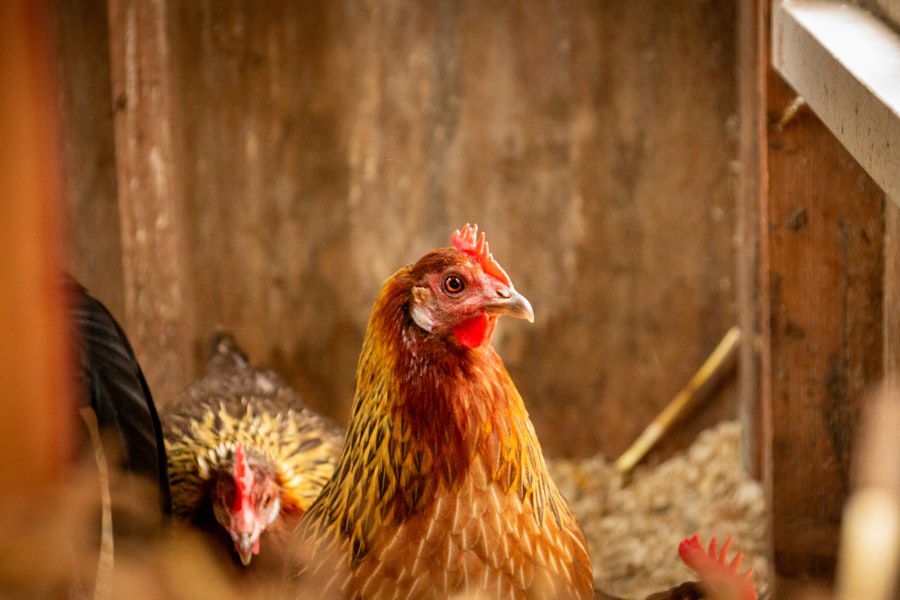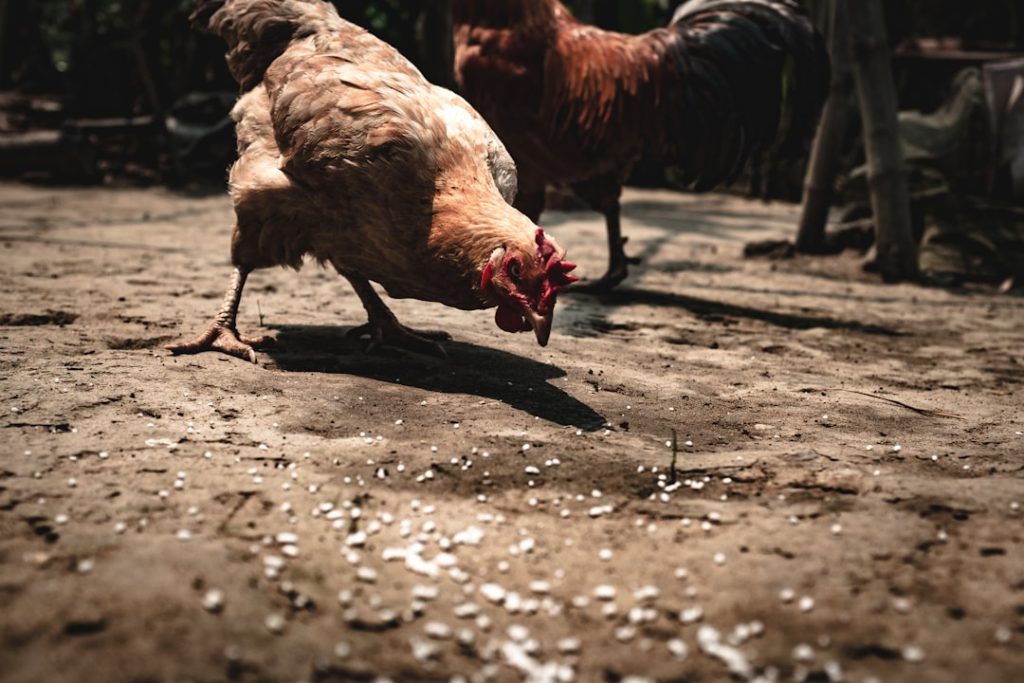Chicken space requirements are crucial for maintaining a healthy and comfortable living environment. These birds need sufficient area to move, stretch their wings, and perform natural behaviors like scratching and dust bathing. The required space varies based on factors including breed, age, and whether the chickens are confined or free-range.
Understanding these requirements is vital for the chickens’ well-being and successful poultry keeping. Chickens are social creatures that flourish in flocks but require adequate space to establish a hierarchy and prevent overcrowding. Insufficient space can result in stress, aggression, and health problems among the birds.
Beyond physical space, chickens need proper ventilation, natural light exposure, and protection from predators and weather conditions. Comprehending and meeting these space requirements ensures the happiness, health, and productivity of your chickens.
Table of Contents
- 1 Factors to Consider When Determining Space for Chickens
- 2 The Minimum Space Requirements for Keeping 2 Chickens
- 3 Tips for Creating a Comfortable Living Space for Chickens
- 4 Potential Issues of Overcrowding and How to Avoid Them
- 5 Utilizing Outdoor Space for Chicken Keeping
- 6 Finding the Right Amount of Space for Your Chickins
- 7 FAQs
- 7.1 How much space do I need to keep 2 chickens?
- 7.2 Why is space important for keeping chickens?
- 7.3 What are the consequences of not providing enough space for chickens?
- 7.4 What factors should I consider when providing space for chickens?
- 7.5 Are there any regulations or guidelines for providing space for chickens?
Key Takeaways
- Chickens require adequate space to live comfortably and exhibit natural behaviors.
- Factors such as breed, size, and purpose of keeping chickens should be considered when determining space requirements.
- The minimum space requirement for keeping 2 chickens is around 8 square feet of coop space and 40 square feet of outdoor space.
- Creating a comfortable living space for chickens involves providing proper ventilation, nesting boxes, and roosting bars.
- Overcrowding can lead to health and behavioral issues in chickens, so it’s important to avoid it by providing sufficient space.
- Utilizing outdoor space for chicken keeping can include providing access to grass, dirt, and natural sunlight for the chickens’ well-being.
- Finding the right amount of space for your chickens is crucial for their health and happiness, so it’s important to consider all factors and provide adequate space for them to thrive.
Factors to Consider When Determining Space for Chickens
Breed-Specific Space Needs
The breed of chicken is a crucial factor to consider. Different breeds have varying space requirements based on their size, activity level, and natural behaviors. For instance, larger breeds like Orpingtons or Brahmas require more space than smaller breeds like bantams. Additionally, some breeds are more active and need more room to roam and forage.
Age and Growth Considerations
The age of the chickens is another essential factor to consider. Young chickens require less space than mature chickens, but it’s vital to plan for their future growth when designing their living space. If you plan to keep chickens for egg production, you’ll need to provide nesting boxes and roosting space, which will also impact the overall space requirements.
Housing and Outdoor Space
The type of housing you provide for your chickens will also influence their space requirements. If you plan to keep your chickens in a confined coop, you’ll need to ensure that there is enough room for them to move around comfortably. On the other hand, if you plan to allow your chickens to free-range, you’ll need to consider the amount of outdoor space available to them.
The Minimum Space Requirements for Keeping 2 Chickens

The minimum space requirements for keeping two chickens will depend on whether they are confined to a coop or allowed to free-range. If you plan to keep two chickens in a coop, the general recommendation is to provide at least 4 square feet of space per chicken. This means that a coop for two chickens should be at least 8 square feet in size.
Additionally, you will need to provide roosting space and nesting boxes within the coop. If you plan to allow your two chickens to free-range, they will still need a coop for shelter at night and protection from predators. However, during the day, they will require access to a larger outdoor area.
The general recommendation for free-ranging chickens is to provide at least 10 square feet of outdoor space per chicken. This means that a minimum of 20 square feet of outdoor space would be required for two free-ranging chickens. It’s important to note that these are minimum space requirements and providing more space for your chickens is always beneficial.
More space allows for better ventilation, reduces the risk of aggression and disease, and allows the chickens to engage in natural behaviors such as foraging and dust bathing.
Tips for Creating a Comfortable Living Space for Chickens
Creating a comfortable living space for your chickens is essential for their well-being and productivity. Here are some tips for designing a chicken coop or outdoor area that meets their space requirements and provides a comfortable environment: – Provide plenty of ventilation: Good ventilation is essential for maintaining air quality and regulating temperature within the coop. This can be achieved through windows, vents, or open eaves.
– Allow access to natural light: Chickens require natural light for their health and well-being. Ensure that the coop has windows or skylights to allow sunlight to enter. – Provide roosting space: Chickens like to roost at night, so it’s important to provide enough roosting space within the coop.
Roosts should be elevated off the ground and provide at least 8 inches of space per chicken. – Include nesting boxes: If you plan to keep hens for egg production, provide nesting boxes where they can lay their eggs in a quiet and private area. – Create a dust bathing area: Chickens enjoy dust bathing as a way to keep clean and control parasites.
Provide a designated area within the coop or outdoor space where they can engage in this natural behavior. – Allow access to outdoor space: If possible, allow your chickens access to an outdoor area where they can roam, forage, and engage in natural behaviors. This can be achieved through a fenced-in yard or by allowing them to free-range in a safe environment.
By following these tips, you can create a comfortable living space for your chickens that meets their space requirements and allows them to thrive.
Potential Issues of Overcrowding and How to Avoid Them
Overcrowding can lead to a variety of issues for chickens, including stress, aggression, disease, and reduced egg production. It’s important to avoid overcrowding by providing adequate space for your chickens and monitoring their behavior for signs of stress or aggression. One potential issue of overcrowding is an increase in aggressive behavior among the chickens.
When chickens are crowded together with limited space, they may become territorial and engage in pecking or bullying behavior. This can lead to injuries and stress among the flock. Additionally, overcrowding can lead to an increase in disease transmission as chickens are more likely to come into contact with each other’s waste and pathogens.
To avoid issues of overcrowding, it’s important to provide enough space for your chickens based on their breed, age, and living environment. Additionally, monitor the behavior of your flock regularly to ensure that they are not showing signs of stress or aggression. If overcrowding becomes an issue, consider reducing the size of your flock or providing additional living space.
Utilizing Outdoor Space for Chicken Keeping

Benefits for Chickens
Outdoor space provides more room for chickens to move around and reduces the risk of overcrowding within the coop. This can lead to a significant improvement in their overall health and happiness.
Ensuring Safety and Security
If you plan to utilize outdoor space for chicken keeping, it’s essential to ensure that the area is safe and secure from predators. This can be achieved through fencing or by providing a secure outdoor run attached to the coop. Additionally, consider providing shade and shelter within the outdoor area to protect the chickens from extreme weather conditions.
Benefits for Chicken Owners
Outdoor space can also benefit chicken owners by reducing the amount of cleaning required within the coop. When chickens have access to an outdoor area, they are more likely to engage in natural behaviors such as dust bathing, which helps keep them clean and reduces the amount of dirt and waste within the coop. Overall, utilizing outdoor space for chicken keeping provides numerous benefits for both the chickens and their owners and allows for a more natural and comfortable living environment.
Finding the Right Amount of Space for Your Chickins
In conclusion, understanding the space requirements for chickens is essential for providing them with a comfortable and healthy living environment. Factors such as breed, age, housing type, and outdoor access all play a role in determining the amount of space needed for chickens. By considering these factors and following tips for creating a comfortable living space, you can ensure that your chickens have enough room to thrive.
It’s important to avoid issues of overcrowding by providing adequate space and monitoring the behavior of your flock regularly. Utilizing outdoor space can provide numerous benefits for both the chickens and their owners by allowing them to engage in natural behaviors and reducing the risk of overcrowding within the coop. By finding the right amount of space for your chickens based on their individual needs, you can create a comfortable and healthy living environment that promotes their well-being and productivity.
If you’re considering keeping chickens, you may be wondering how much space you need for them. According to a helpful article on Poultry Wizard, the Producers Pride Sentinel Chicken Coop is a great option for keeping chickens and provides ample space for two hens. The article also discusses the importance of providing enough space for your chickens to roam and forage, as well as the benefits of having a well-designed coop. For more information on keeping chickens, you can check out the article here.
FAQs
How much space do I need to keep 2 chickens?
The recommended minimum space for 2 chickens is 10 square feet of coop space and 20 square feet of outdoor space.
Why is space important for keeping chickens?
Adequate space allows chickens to exhibit natural behaviors, reduces stress, and minimizes the risk of disease and aggression.
What are the consequences of not providing enough space for chickens?
Insufficient space can lead to health issues, behavioral problems, and decreased egg production in chickens.
What factors should I consider when providing space for chickens?
Consider the breed of chickens, their size, and the amount of time they will spend in the coop and outdoor space when determining the required space.
Are there any regulations or guidelines for providing space for chickens?
Local regulations and guidelines may vary, so it’s important to check with local authorities or agricultural extension offices for specific requirements in your area.
Meet Walter, the feathered-friend fanatic of Florida! Nestled in the sunshine state, Walter struts through life with his feathered companions, clucking his way to happiness. With a coop that’s fancier than a five-star hotel, he’s the Don Juan of the chicken world. When he’s not teaching his hens to do the cha-cha, you’ll find him in a heated debate with his prized rooster, Sir Clucks-a-Lot. Walter’s poultry passion is no yolk; he’s the sunny-side-up guy you never knew you needed in your flock of friends!







